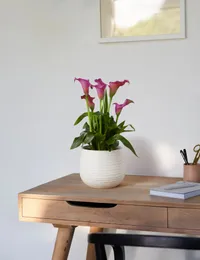How to keep your house cool in summer
Stay cool with these top tips and tricks
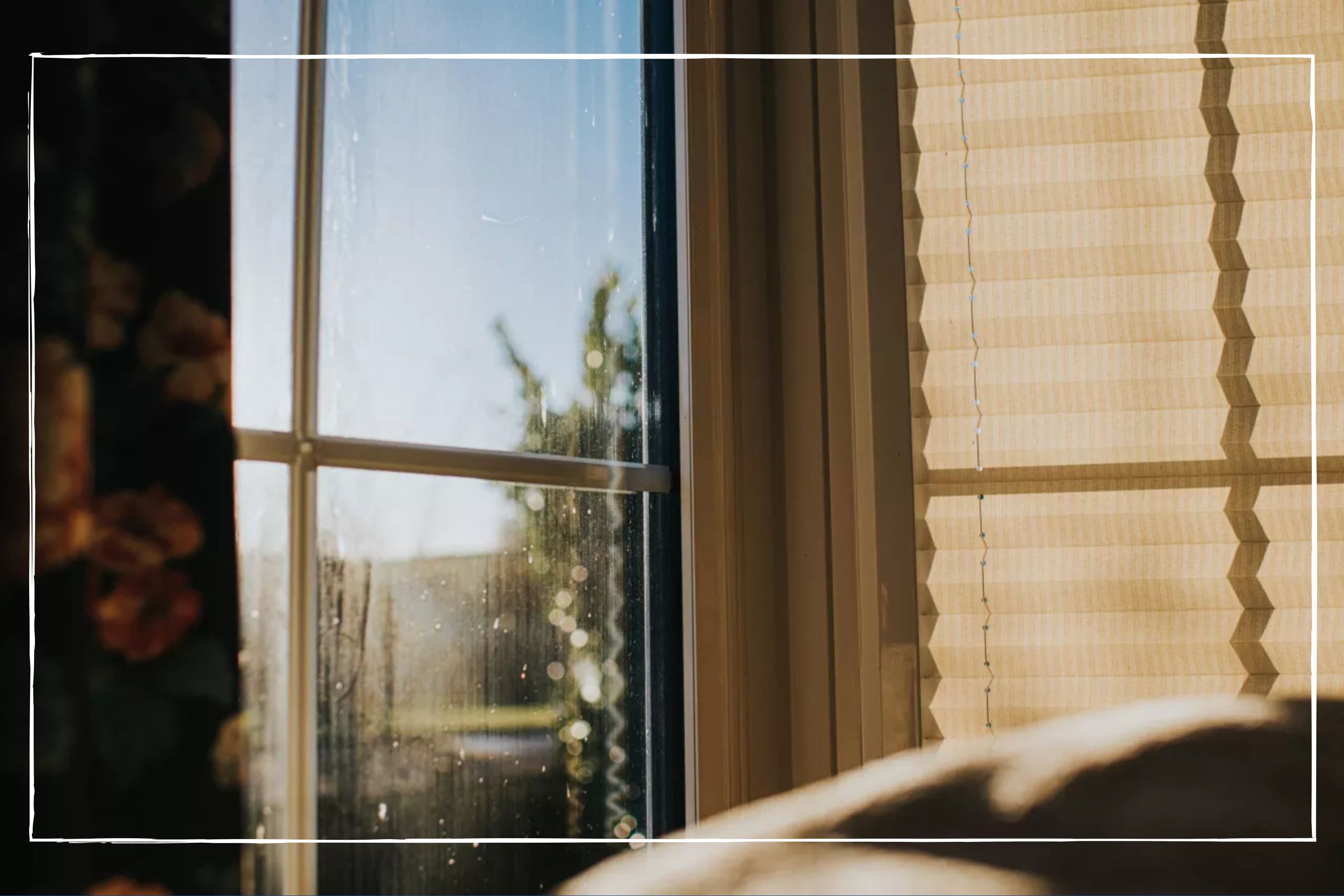
Knowing how to keep your house cool in summer can be a godsend during heatwaves and hot sticky nights.
Summer is an exciting season full of BBQs, beach trips and dips in the paddling pool - as long as there's no hosepipe ban, of course! Yet whilst we all crave the sunshine, it's the subsequent soaring temperatures that many of us struggle with. Especially when it comes to sleeping in the heat and trying to keep babies cool in hot weather.
OVO energy expert, Greig Miller, tells us "When it comes to keeping your home cool in the heat, there are three key things to remember. Only let cold air in, keep the hot air out, and limit solar gain - the heat that's generated through sunlight hitting windows."
With this in mind, keeping our home environment as cool as possible can be easily achieved through a number of simple hacks. We've gathered the best expert advice and tried-and-tested tips to put into practice for when the hot weather next hits.
How to keep your house cool in summer
1. Block the sun out
It may seem obvious, but many people love to let the light in and have sun streaming through the window. But, if you're wondering how to keep your house cool in summer, you may need to resist the temptation and keep curtains and blinds closed during the day.
Window experts from The Residence Collection tell us "With sunny days and lighter nights upon us, you probably can’t wait to open your blinds and curtains to let in the natural light you have been craving. However, keeping your blinds and curtains closed during the day will act as a barricade to the unwanted heat entering your home."
They continue "But, if you really can’t wait to let that sunlight ooze in, opt to close your blinds and curtains between 11am and 3pm, when it’s the hottest part of the day. When the temperature dips during the evening, open them to enjoy the last of the sunlight."
Parenting advice, hot topics, best buys and family finance tips delivered straight to your inbox.
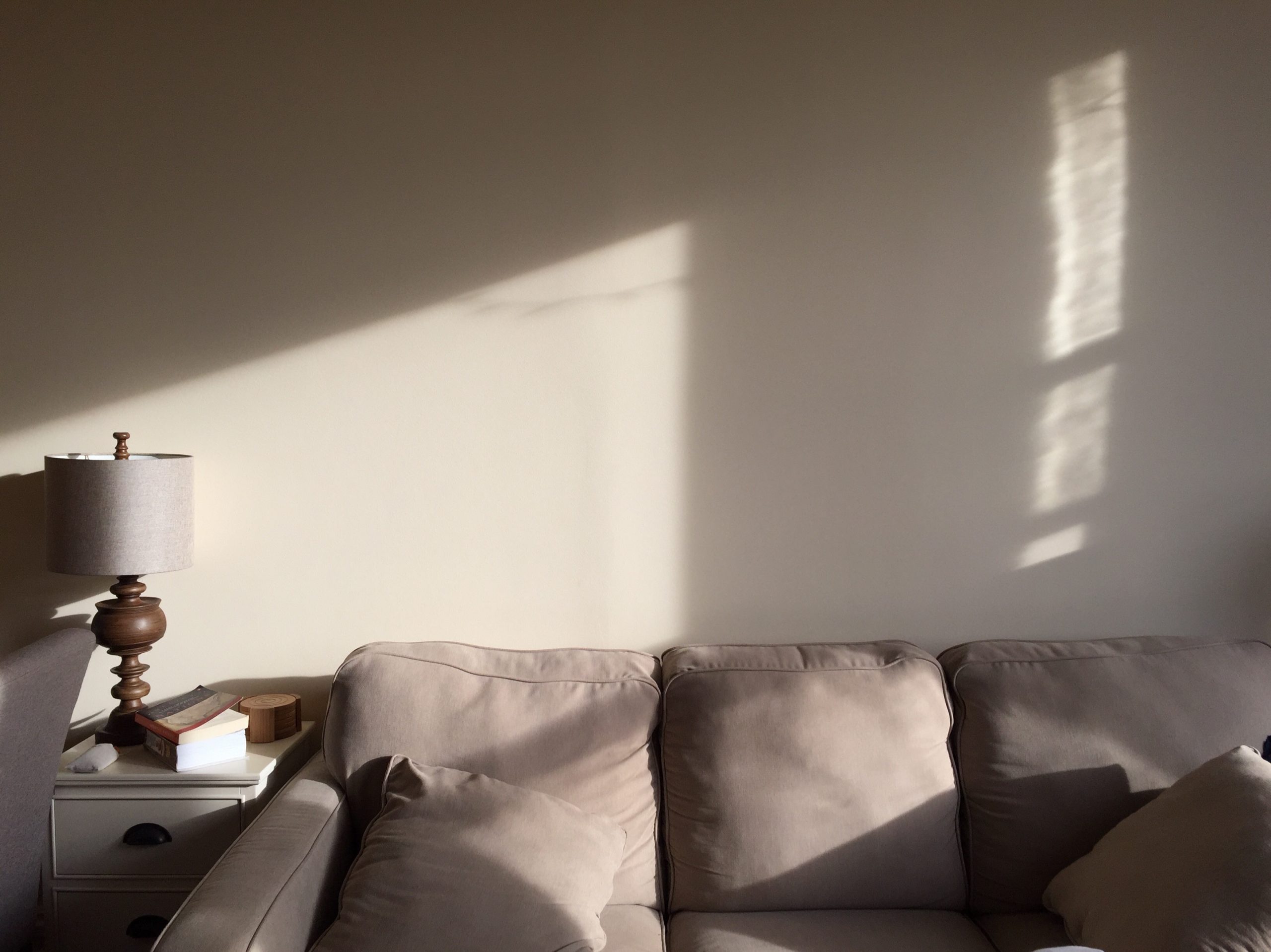
Jason Peterkin, director at 247 Blinds, suggested that it's also important to consider the direction that your window faces too, when it comes to preventing sun streaming in through blinds and curtains.
He said, “You’ll first need to consider factors such as which direction your window faces; a south-facing room will benefit from thicker, thermal materials to help keep it cool."
Rooms with south-facing windows can be unbearably hot in the summer. If closing the curtain and blinds just isn't doing the trick, try temporarily repurposing a car window shade or investing in a purpose-built indoor window shade. Be careful that you place the sun shade flat. Fanfolding in the shade may concentrate the reflected rays and create a solar cooker effect - not good. Check the safety instructions on the product or get advice when purchasing the sun shade before using to check it's safe to use in the home as well as the car.
Sunfree 2 Pack Light Filtering Pleated Fabric Shade - £26.99 | Amazon
These blinds are safe, non-toxic, breathable and environmentally friendly. Plus they won't let in a single ray of sunlight.
2. Open windows and balcony/garden doors in the morning and at night
During the middle of the day you should keep windows closed, so it’s best to open doors and windows first thing in the morning and late afternoon - basically after the hottest part of the day has been and gone. The trick is to keep air moving through your home. Did you know that moving air is cooler than still air? Basically think of a breeze moving through your home. To do this, make sure you have windows open at opposite ends of your home with the doors open in between. This will create a draft and allow air to move freely through your home.
If you find flies and mosquitos are getting in, invest in a net that will cover door frames or windows.
The most important time to keep your windows open is at night. This is when the air is coolest. Leaving these open while you sleep can also be a good way of keeping the house cool at night.
One final top tip for anyone with lovely sash windows - make sure both the top and bottom are open equal amounts. The Victorians designed the windows so that cool air comes in through the lower opening and warm air is pushed out through the top. Or that's the theory at least!
Experts from The Residence Collection urge us to make use of trickle vents during hot weather. They say "Trickle vents are known to be an excellent addition to combating condensation and prevent dampness during the winter months, but they have ideal ventilation qualities for the warmer seasons too."
To explain how trickle vents work, they explain "So, how do trickle vents work? Their purpose is to allow air to trickle into your home to increase ventilation, without making your home too hot, too cold or compromise on security. By leaving your trickle vents open during the summer, air can travel freely throughout the home without letting in the hot and humid air as well as keeping out those pesky flying insects."
3. Eat outside if you can - and don't use the oven
Using larger appliances automatically generate heat, and one like your oven is also designed to becomes hugely hot. The heat from your oven can move around your house, and if you happen to have air conditioning, will cancel out its effects. This is why you should make the switch to BBQ eating - no one wants to be stuck in a kitchen with the oven on, not when it feels like you're IN an oven already.
If you have no outdoor space or eating outside isn't an option, consider preparing meals that don't require the use of the oven to cook. Delicious summer recipes like no-cook salads, open sandwiches and Mezze platters offer refreshing and healthy alternatives to having to put anything in the oven.
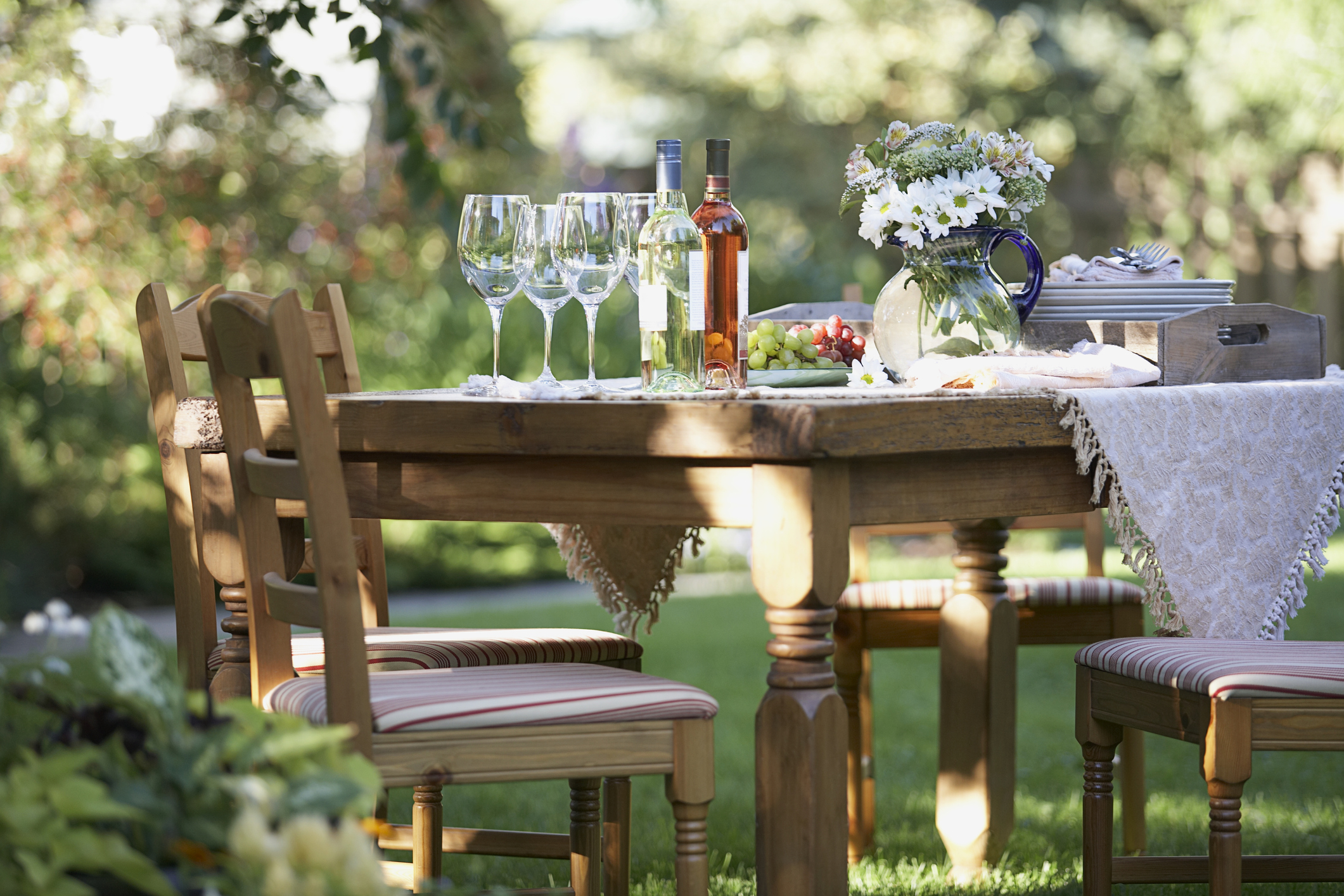
4. Turn off unused appliances
Like ovens, other appliances around the house will generate unwanted heat into a home over the summer. Consider turning things like your telly, desktop computer and kitchen appliances off - don't just leave them on standby. This will stop them overheating and warming the rooms they are in.
Similarly, be mindful of charging things like your phone or tablet. These too give off heat, so it might be best to charge first thing in the morning when cooler. And avoid charging them at night, especially if struggling to sleep in the heat.
Andy Kerr, founder and air conditioning expert at BOXT says "It is counter-intuitive to use appliances that generate heat in a room you are trying to cool, so keep this in mind before deciding to use ovens, hair dryers or other electrical appliances. "
Mary Love, Head of Product & Innovation at Simba, also warns of the dangers of getting yourself too hot just before sleep, by using tech in bed. She adds "As hard as it may be for some, it’s time to stop scrolling on TikTok in bed. Using your phone in bed - especially whilst it’s on charge - can generate heat and make you feel hotter. Likewise with a laptop, if you’re watching a film on a laptop in bed, this can generate heat as well!"
5. Turn lights off and invest in energy-saving lightbulbs
Light bulbs are another source of heat in homes and should be kept off when trying to cool your house down. The type of lightbulb you choose can also have a big impact on their heat-generating abilities.
Incandescent bulbs use electric currents to heat up a filament, and a lot of heat is needed to get that filament hot. Not only does that make these bulbs hot to the touch, but they sometimes only use 10% of the consumed energy to produce light, losing the other 90% to heat during light production.
“Conventional incandescent light bulbs generate light quite inefficiently, giving off waste heat in the process," says OVO Energy. "Switch to low-energy light bulbs to reduce overheating and save money." With low energy bulbs using 90-95% of energy to create light almost no heat loss, everyone wins.
ECO Energy Saving 11W Bayonet Light Bulbs - £11.99 | Amazon
This value 2 pack is for use with standard UK 2 pin b22 bayonet fittings. It boast a 75W brightness - which is better than 40W and 60W alternatives on the market.
6. Invest in some house plants
House plants have really been having a moment recently and we can't deny that they certainly make our houses happier. As well as being proven to boost your mood, house plants can also help keep your house cool.
Plants act as natural air conditioners and generate moisture into the atmosphere through a process known as transpiration.
The most heat-efficient plants are peace lilies and rubber plants as they work best in humid conditions.
So having a house plants or two around will help keep house cool in summer naturally. Just don't forget to water them - especially as the temperature creeps up outside.
Calla Lily Plant - £25.00 | Marks and Spencer
This beautiful white calla lily arrives in a stylish ceramic pot and will fit purposely in any home. (Colours may vary slightly throughout the season).
LIVIVO Electric 16” Pedestal Fan - £29.99 | Amazon
This oscilating 16" floor fan is the perfect size to pop in the corner of your bedroom during your slumber.
What is the best way to keep cool inside in hot weather?
Swap sheets
Pack away those 13 tog duvets for now and crack out some cooling cotton sheets instead. Cotton bed sheets have been scientifically proven to improve sleep in the heat, thanks to their breathability.
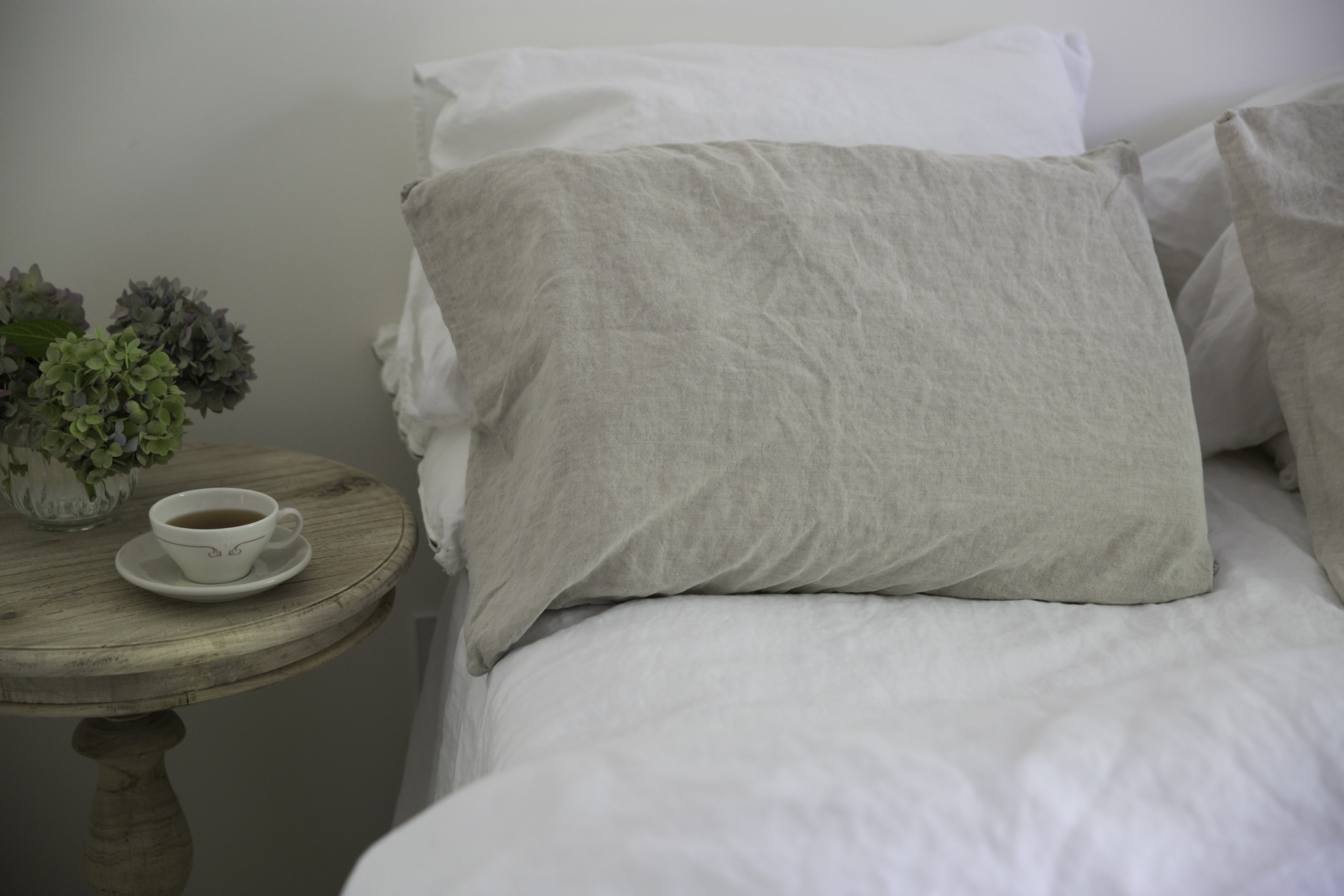
As Lucy Ackroyd, Head of Design at Christy England explains: “Pure cotton sheets have sensory benefits and are naturally breathable so they help to regulate your temperature and moisture levels while you sleep, stopping the clammy feeling you can experience with synthetic fibres.
"Secondly, high thread count fabrics are smoother against the skin so as well as being much more comfortable you are less likely to feel tangled up or trapped by rougher fabrics that cling, especially to nightwear."
Try just sleeping under a sheet as well as ditch the duvet altogether. The lighter layer will keep you cooler and stop you getting so hot overnight.
Use the fridge and freezer
A handy tip to keep cool inside and overnight is to use a hot water bottle - but just freeze them instead! Fill the bottle with tap water and place in the freezer for a few hours before leaving it at the foot of your bed.
The Sleep Council also recommends using the fridge to cool your bedding down before you go to sleep. They say: 'Put your pillow case in the fridge before bedtime' in order to keep cool inside on hot nights. They also advise: "Chill socks in the fridge before bedtime as it will help to lower your core body temperature."
This one actually extends to anything you fancy freezing that you'll be sleeping on, or in. Simply pop sheets, clothing or even towels into a resealable plastic bag and place in the freezer. Towels work well because you don't have to worry about making the bed up again if you've removed sheets - place the cooled towel on top of your sheets or straight on top of yourself instead of any other cover, and start the night cool.
Adjust your body temperature
Before bed, put your wrists under the running cold tap and bathe your feet in cold water. Both of these will help lower your body temperature before turning in for the night.
If you're really hot, take a cold shower or even a cold bath to really cool yourself down. Scientists have found that a bath before bed helps to lower the body’s core temperature, which in turn aids better sleep.
The Sleep Council also advise having 'plenty of cold water' throughout the day and 'always keep a glass handy by the bed' so you can take a sip of cool water if you feel hot in the night.
Mary Love from Simba tells us "Have ice packs at the ready to help cool your body temperature in an instant. When we find ourselves awake sweating in the middle of the night, tossing and turning to get comfortable, we can often make ourselves hotter as we stress about not getting any sleep! This is the time to turn to your ice packs. Place them on your wrists or forehead for a few minutes and relax as your body temperature quickly begins to drop. No ice packs? Use a flannel or cut up an old towel instead."
How can I keep my house cool in summer without air conditioning?
As well as blocking out sunlight by keeping doors and windows shut, insulation can also work to keep a room cool without using air conditioning. Windows can be insulated with thermally backed blinds, with Oliver Hudson, blinds expert at BlindsbyPost telling us "’Thermally backed blinds are just as important in summer as in the winter, the insulating layer can reflect the heat entering windows."
He adds "As we head into summer we expect to see more people enjoying the benefits of these kinds of products to avoid using energy to power products like fans and air conditioning units which can prove to be expensive."
Greig Millar from OVO, also shared insights relating to insulation in general. He said "People often only consider insulation measures when it starts to get cold, but insulation is just as important for keeping homes cool in hot weather. Loft insulation is usually the most affordable place to start but on a smaller scale, you can try a draught excluder and inexpensive foam tape around doors to help keep cold air in and warm air out."
Investing in a dehumidifier is also said to increase comfort in hotter months. It won't reduce the room temperature, but works to control the hot air that makes you uncomfortable during the heat. Rick Sun from Green Leaf Air explains: "High humidity can make a room feel hotter than it is. If you want to make the air in your space feel more comfortable, consider using a dehumidifier to remove extra moisture. It can help it feel cooler and less stuffy."
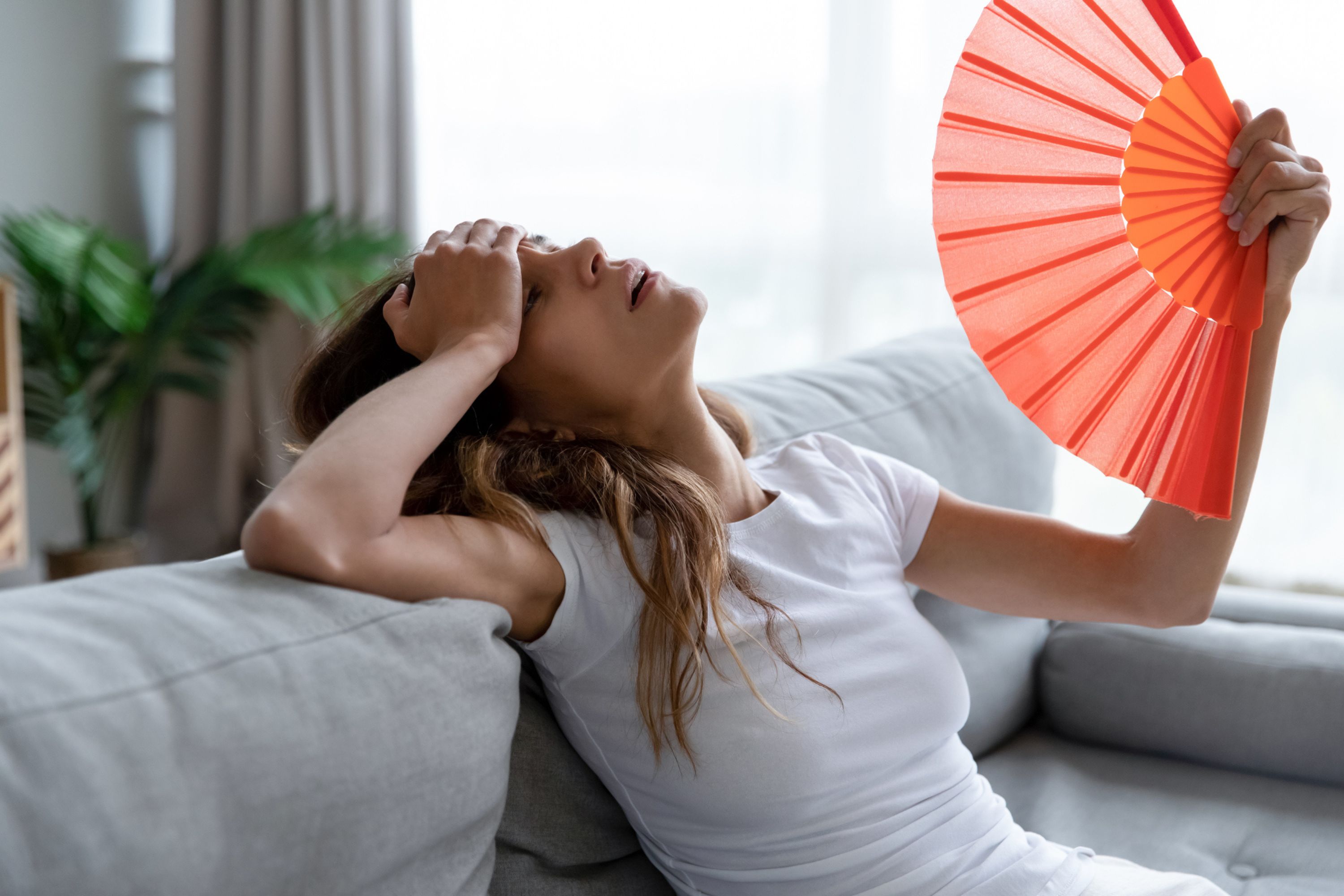
Does opening the loft cool the house?
Although there are mixed opinions over whether this works, the general consensus is that it can't hurt to try opening your loft to cool the house. Opening the loft hatch could allow the rising warm air somewhere to go, allowing you to shut it again when the house feels cooler - this will keep the warm air trapped up there, allowing cool air to circulate.
However, whether this trick works or not can depend on many factors, including the type of insulation you have and where it's placed, and the sort of tiles you have - some will retain heat differently to others. If you have a loft conversion, this plan definitely won't work!
Speaking to This Is Money, a spokesperson for The Green Age said "Opening the loft hatch might seem like a quick fix to your hot master bedroom, but is only really an option if your loft is insulated between the rafters. If your loft is insulated at joist level, then you may find that opening the hatch only causes the even hotter trapped air to circulate."
How to cool down a room
You can quickly and efficiently cool down a room by hanging a wet sheet in front of an open window. We know we've told you too keep doors and windows closed, but if a room is still feeling too hot, this is worth trying. As the air comes in through the window, the wet sheet will cool it, acting as a makeshift air conditioning unit.
Similarly, if it's just one room you're focused on, fill a large bowl with water and freeze it. Once frozen, place it somewhere in the room and the cool vapours will rise from it and lower the room temperature. Place several of these in the same room for a faster effect, or use bowls of cold water instead - the effect might not be as fast, but they'll still work to lower temperatures - just keep them clear of electrical items and sockets.
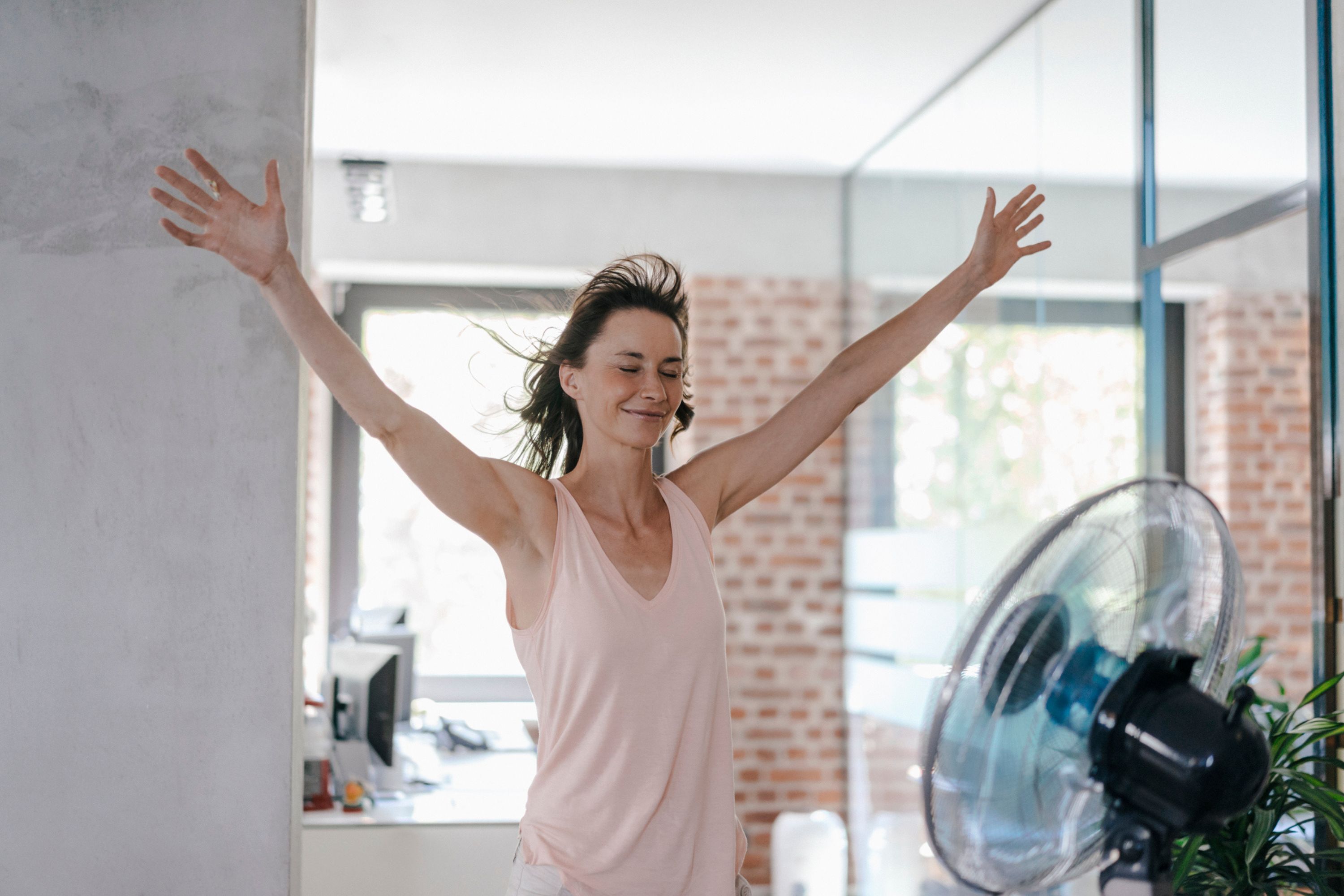
How to cool down a room with a fan
A top tip when using fans to cool down is to leave a large bowl of mounded ice in front of it while it's working. This will circulate cooler air around the room and function like a makeshift AC, but considerably cheaper. Check out how much it costs to run a fan and how much cheaper it is that a portable air conditioner.
Positioning you fan correctly for optimum cooling is also important. Fans, when left to their own devices, can just circulate the same warm air. It may seem counter intuitive, but the trick with getting the most out of your fan isn't actually to always point it in your direction. Rather, you want to consider pointing your fan towards an open window - especially at night.
If you angle a fan towards a window, they will work to push out the warm air, cooling the room. If you want to get really technical about it, place the fan facing out of the window in a room you're not sleeping in. Place the fan facing out of the open window and make sure the window in your bedroom is open. When you turn the fan on, this should create a sort of low pressure system in your home where hot air is driven out of one room and in turn sucks cool air into the room your are in.
Have a ceiling fan? Set it anti-clockwise for a similar cooling affect. If you have a basement, position a fan pointing up the stairs to the rest of the house. This will push the cooler air below the house up into the ground floor.
Greig Millar from OVO tells us "Electric fans can really help to cool your home and give you that instant relief, however they can use a lot of energy and don’t actually cool the air. Since heat rises, the coolest air in your house is going to be at floor level, so set your fan on the ground floor and point it upwards. Position so it points outwards towards the opposite wall, with no large objects in the way. This will bounce the cooler air back into the room, to cool the overall temperature."
However, some experts have warned us that sleeping with a fan on could be bad for you, so you might want to save this for daytime use.
For 8 more ingenious ways to cool down fast, we have you covered. For expectant mothers, how to keep cool during pregnancy is really important. If you've got a newborn or young baby, how to dress a baby for sleep might be a concern - especially in the heat. We have top tips and which tog sleeping bag to use, depending on the temperatures.
Video of the Week
Stephanie has been a journalist since 2008, she is a true dynamo in the world of women's lifestyle and family content. From child development and psychology to delicious recipes, interior inspiration, and fun-packed kids' activities, she covers it all with flair. Whether it's the emotional journey of matrescence, the mental juggling act of being the default parent, or breaking the cycle of parenting patterns, Stephanie knows it inside out backed by her studies in child psychology. Stephanie lives in Kent with her husband and son, Ted. Just keeping on top of school emails/fundraisers/non-uniform days/packed lunches is her second full-time job.


